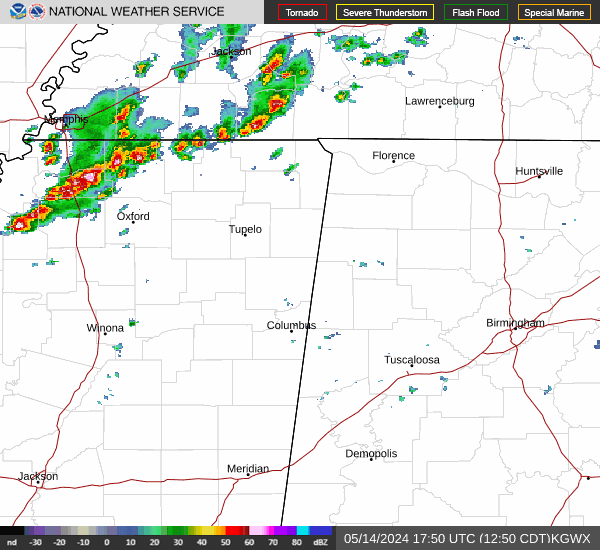URGENT - WEATHER MESSAGE
National Weather Service Birmingham AL
1058 AM CDT Tue Jul 15 2025
ALZ011>015-017-022>026-030>034-039-160600-
/O.NEW.KBMX.HT.Y.0004.250716T1500Z-250717T0000Z/
Marion-Lamar-Fayette-Winston-Walker-Blount-Pickens-Tuscaloosa-
Jefferson-Shelby-St. Clair-Sumter-Greene-Hale-Perry-Bibb-Marengo-
Including the cities of Greensboro, Hoover, Alabaster, Double
Springs, Pelham, Marion, Hamilton, Jasper, Birmingham,
Carrollton, Columbiana, Fayette, Sulligent, Centreville, Eutaw,
Oneonta, Pell City, Livingston, Vernon, Linden, Moundville,
Demopolis, Tuscaloosa, and Moody
1058 AM CDT Tue Jul 15 2025
...HEAT ADVISORY IN EFFECT FROM 10 AM TO 7 PM CDT WEDNESDAY...
* WHAT...Heat index values up to 106 expected.
* WHERE...Bibb, Blount, Fayette, Greene, Hale, Jefferson, Lamar,
Marengo, Marion, Perry, Pickens, Shelby, St. Clair, Sumter,
Tuscaloosa, Walker, and Winston Counties.
* WHEN...From 10 AM to 7 PM CDT Wednesday.
* IMPACTS...Hot temperatures and high humidity may cause heat
illnesses.
PRECAUTIONARY/PREPAREDNESS ACTIONS...
Drink plenty of fluids, stay in an air-conditioned room, stay out of
the sun, and check up on relatives and neighbors. Young children and
pets should never be left unattended in vehicles under any
circumstances.
Take extra precautions if you work or spend time outside. When
possible, reschedule strenuous activities to early morning or
evening. Know the signs and symptoms of heat exhaustion and heat
stoke. Wear light weight and loose fitting clothing when possible
and drink plenty of water.
To reduce risk during outdoor work, the Occupational Safety and
Health Administration recommends scheduling frequent rest breaks in
shaded or air conditioned environments. Anyone overcome by heat
should be moved to a cool and shaded location. Heat stroke is an
emergency! Call 9 1 1.
&&
$$
44
URGENT - WEATHER MESSAGE
National Weather Service Jackson MS
943 PM CDT Tue Jul 15 2025
ARZ074-075-LAZ007>009-015-016-023>026-MSZ018-019-025>066-072>074-
161045-
/O.CON.KJAN.HT.Y.0006.250716T1500Z-250717T0000Z/
Ashley-Chicot-Morehouse-West Carroll-East Carroll-Richland-
Madison LA-Franklin LA-Catahoula-Tensas-Concordia-Bolivar-
Sunflower-Leflore-Grenada-Carroll-Montgomery-Webster-Clay-Lowndes-
Choctaw-Oktibbeha-Washington-Humphreys-Holmes-Attala-Winston-
Noxubee-Issaquena-Sharkey-Yazoo-Madison MS-Leake-Neshoba-Kemper-
Warren-Hinds-Rankin-Scott-Newton-Lauderdale-Claiborne-Copiah-
Simpson-Smith-Jasper-Clarke-Jefferson-Adams-Franklin MS-Lincoln-
Lawrence-Jefferson Davis-Covington-Jones-Marion-Lamar-Forrest-
Including the cities of Ackerman, Bay Springs, Columbus, St.
Joseph, West Point, Bude, Eupora, Forest, Stonewall, Prentiss,
Greenville, Goodman, North Carrollton, Brookhaven, New Hebron,
Louisville, Indianola, Crystal Springs, Hattiesburg, Ruleville,
Carthage, Mayersville, Lake Providence, Shubuta, Mount Olive,
West Hattiesburg, Brandon, Fayette, Mendenhall, Purvis, Pickens,
Union, Epps, Greenwood, Pearl, Eudora, Grenada, Newellton,
Newton, Vicksburg, Oak Grove, Winnsboro, Vidalia, Canton, West
Crossett, Carrollton, Tchula, Delhi, Harrisonburg, Lumberton,
Rayville, De Kalb, Durant, Macon, North Crossett, Lake Village,
Bassfield, Richland, West Ferriday, Hazlehurst, Anguilla,
Jackson, Port Gibson, Quitman, Bastrop, Crossett, Meridian,
Jonesville, Pearl River, Meadville, Yazoo City, Raleigh, Belzoni,
Isola, Ferriday, Natchez, Morton, Scooba, Wesson, Philadelphia,
Columbia, Weir, Magee, Starkville, Lexington, Heidelberg,
Mathiston, Decatur, Ridgeland, Monticello, Vaiden, Tallulah,
Conehatta, Laurel, Hamburg, Winona, Collins, Brooksville,
Cleveland, Dermott, Rolling Fork, Waterproof, Kosciusko, Madison,
Roxie, and Taylorsville
943 PM CDT Tue Jul 15 2025
...HEAT ADVISORY REMAINS IN EFFECT FROM 10 AM TO 7 PM CDT
WEDNESDAY...
* WHAT...Heat index values up to 111 expected.
* WHERE...Portions of southeast Arkansas, northeast Louisiana, and
central, east central, north central, northeast, northwest, south
central, southeast, southwest, and west central Mississippi.
* WHEN...From 10 AM to 7 PM CDT Wednesday.
* IMPACTS...Hot temperatures and high humidity may cause heat
illnesses.
PRECAUTIONARY/PREPAREDNESS ACTIONS...
Drink plenty of fluids, stay in an air-conditioned room, stay out of
the sun, and check up on relatives and neighbors.
Take extra precautions when outside. Wear lightweight and loose
fitting clothing. Try to limit strenuous activities to early morning
or evening. Take action when you see symptoms of heat exhaustion and
heat stroke.
To reduce risk during outdoor work, the Occupational Safety and
Health Administration recommends scheduling frequent rest breaks in
shaded or air conditioned environments. Anyone overcome by heat
should be moved to a cool and shaded location. Heat stroke is an
emergency! Call 9 1 1.
Monitor the latest forecasts and warnings for updates.
&&
$$
sas20
URGENT - WEATHER MESSAGE
National Weather Service Huntsville AL
811 PM CDT Tue Jul 15 2025
ALZ001>007-016-161100-
/O.CON.KHUN.HT.Y.0003.250716T1500Z-250717T0000Z/
Lauderdale-Colbert-Franklin AL-Lawrence-Limestone-Madison-Morgan-
Cullman-
Including the cities of Tuscumbia, Red Bay, Town Creek, Athens,
Decatur, Sheffield, Moulton, Florence, Russellville, Muscle
Shoals, Cullman, and Huntsville
811 PM CDT Tue Jul 15 2025
...HEAT ADVISORY REMAINS IN EFFECT FROM 10 AM TO 7 PM CDT
WEDNESDAY...
* WHAT...Heat index values up to 103 expected.
* WHERE...Cullman, Limestone, Madison, Morgan, Colbert, Franklin AL,
Lauderdale, and Lawrence Counties.
* WHEN...From 10 AM to 7 PM CDT Wednesday.
* IMPACTS...Hot temperatures and high humidity may cause heat
illnesses.
PRECAUTIONARY/PREPAREDNESS ACTIONS...
Drink plenty of fluids, stay in an air-conditioned room, stay out of
the sun, and check up on relatives and neighbors.
&&
$$
RAD
URGENT - WEATHER MESSAGE
National Weather Service Memphis TN
1133 AM CDT Tue Jul 15 2025
ARZ009-018-026>028-035-036-048-049-058-MOZ113-115-MSZ001>017-020>024-
TNZ048-049-088-089-160515-
/O.NEW.KMEG.HT.Y.0005.250716T1600Z-250717T0200Z/
Clay-Greene-Craighead-Poinsett-Mississippi-Cross-Crittenden-St.
Francis-Lee AR-Phillips-Dunklin-Pemiscot-DeSoto-Marshall-Benton
MS-Tippah-Alcorn-Tishomingo-Tunica-Tate-Prentiss-Coahoma-Quitman-
Panola-Lafayette-Union-Pontotoc-Lee MS-Itawamba-Tallahatchie-
Yalobusha-Calhoun-Chickasaw-Monroe-Lauderdale-Tipton-Shelby-
Fayette-
Including the cities of Fulton, Tunica, Helena-West Helena,
Marks, Clarksdale, Somerville, Holly Springs, Corinth, Kennett,
Paragould, Ripley TN, Pontotoc, Water Valley, Blytheville,
Collierville, Germantown, Jonesboro, Oakland, Forrest City,
Booneville, Houston, Amory, Memphis, Ashland, West Memphis,
Millington, Oxford, Calhoun City, Covington, New Albany,
Coffeeville, Okolona, Olive Branch, Corning, Iuka, Bruce,
Southaven, Piggott, Caruthersville, Bartlett, Wynne, Ripley MS,
Harrisburg, Batesville, Aberdeen, Marianna, Senatobia, Tupelo,
and Charleston
1133 AM CDT Tue Jul 15 2025
...HEAT ADVISORY IN EFFECT FROM 11 AM TO 9 PM CDT WEDNESDAY...
* WHAT...Heat index values up to 110 expected.
* WHERE...Portions of East Arkansas, North Mississippi, Southeast
Missouri, and West Tennessee.
* WHEN...From 11 AM to 9 PM CDT Wednesday.
* IMPACTS...Hot temperatures and high humidity may cause heat
illnesses.
PRECAUTIONARY/PREPAREDNESS ACTIONS...
Drink plenty of fluids, stay in an air-conditioned room, stay out of
the sun, and check up on relatives and neighbors.
To reduce risk during outdoor work, the Occupational Safety and
Health Administration recommends scheduling frequent rest breaks in
shaded or air conditioned environments. Anyone overcome by heat
should be moved to a cool and shaded location. Heat stroke is an
emergency! Call 9 1 1.
&&
$$
JAB









